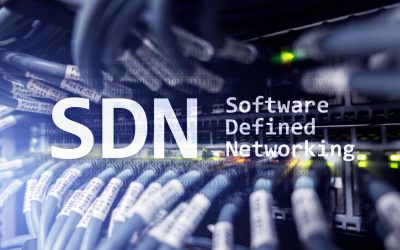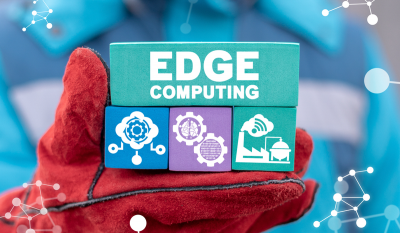Cloud native has been one of the most imperative topics being discussed by the development teams across the world. For some developers, it’s time to utilize a new technology for the development and for others it’s just a hype of technology. Many traditional organizations who have invested a lot of revenue and working hours in On-premise core systems are not pretty keen about cloud-native. These traditional systems are built on monolithic architectural style and also the complexities of development are hardcoded in the applications. The big aspect about these traditionally developed products is that they hold the wealth of highly valuable customer data, including the buying history and product preference.
To use cloud architectural strategy you need to deploy some of the applications on the cloud but depending on nature of your business migrating to the public cloud cannot be feasible. Organizations mostly face the challenges of investments, regulatory requirement, customer data sensitivity, and contractual obligation.
Private cloud strategy can help to build the foundation for applications with a platform with customized service, such private cloud is called as an enterprise platform as a service (ePaaS). The platform can hide the infrastructure complexity that makes the deployment and running of the applications easier.
What is a Cloud native?
Cloud native is an approach to build and run applications that exploit the implications of the cloud computing delivery model. Cloud native is more about how applications are created and deployed? and not where? In the cloud-native, the apps are stored either on a public cloud or private cloud instead of the on-premises data center. The cloud-native uses open source software stack to deploy applications.
- Containerization: Each part of applications, processes are packaged into its own container. This helps in introducing reproducibility, transparency, and resource isolation.
- Dynamic usage: Containers can be used to schedule and manage the optimum utilization of the resource.
- For Micro-services: Applications are segmented into various micro-services. This helps increase the agility and maintain the ability of applications.
To utilize the advantage of the cloud-native, it’s important to understand what cloud-native is doing in terms of app development and automation.
Container
The basic idea of containers is to package all the required software you need and to package them as one executable package. One example of such combination could be Java VM, an application server packaged along with the application itself. You can isolate the contained application and the environment; it can help the programmers run the container in a virtual environment. One of the benefits your organization can get from the environment is that the application is highly independent and the container is highly portable. The container provides you with the flexibility of the system it can be implemented in development, test, or production system. The application also supports horizontal scaling, it can help you start or stop adding features into the application based on the user demands. Docker project is currently the most popular container implementation.
Automation
A container contains all the resources required to run an application, it solves the deployment problem that previously affected your application because of the on-premises environment. Benefitting from the cloud could be a much-channelized process where steps are needed to be followed.
Starting and shutting down system application nodes can be difficult based on the application and the load of the system. For this, you need to,
- Monitor the system
- Trigger the startup or shutdown of the container.
- All configurations should be placed within the limits the parameters.
- Balance the load between active applications
- Share authentication secrets between containers.
Doing all the above steps manually can be cumbersome, so here are some tools you can use- Kubernetes, Docker Swarm, and Amazon ECS. To know more about cloud-native app developments download our whitepaper.
Micro-services
As you have laid down the plan for containerization, and orchestration for implementation of cloud-native. It’s also the time that you understand the changes the cloud-native introduces into the architecture of a system. Cloud native applications are built on micro-services and the architectural approach is different. The general idea of the cloud-native architecture approach is to implement a system of multiple and relatively small applications also called as micro-services. Each micro-services function on its own to provide you with the required functionality it’s developed and operated by a relatively small team.
Benefits of micro-services
- It’s easier to implement a small program that provides single functionality instead of building a large application that would perform all the functions. This speeds up the development of the applications as different user requirements keep arriving.
- Micro-services only work on the certain part of the application thus no unexpected glitches in the application occur in the app.
- Horizontal scaling can be used for application with a sudden increase in user traffic; you could simply start another container to handle an increase in user traffic. It can be implemented for every application that is stateless. Scaling can also be done for apps that are monolithic but its lot cheaper for micro-services. Micro-services help you to pay for only the services you are currently using.
Challenges and solutions for monolithic applications coming on a cloud:
If the user thinks that the existing application is important in terms of business requirement instead of developing a new cloud application it can break-up the monolithic to refractor using the native principle of cloud from the ground up to cloud. Adopting a Cloud native approach will help in the minimum viable product (MVP), development, multivariate testing, rapid iteration and work closely within organizational boundaries.
Cloud native is based on different architectural model includes infrastructure services, containerization, automation, virtualization, and micro-services.
Conclusion
The architecture of cloud computing introduces a new way to implement complex, and scalable systems. Even if you are not hosting your applications on cloud these new ideas can help you build a scalable app keeping the requirements of present and future in mind. Containers can help build and distribute the functionalities of the application at a much faster pace while micro-services provide a scalability model for your app without affecting the present system.
To know more about the cloud-native application development you can download our whitepaper on cloud-native.













